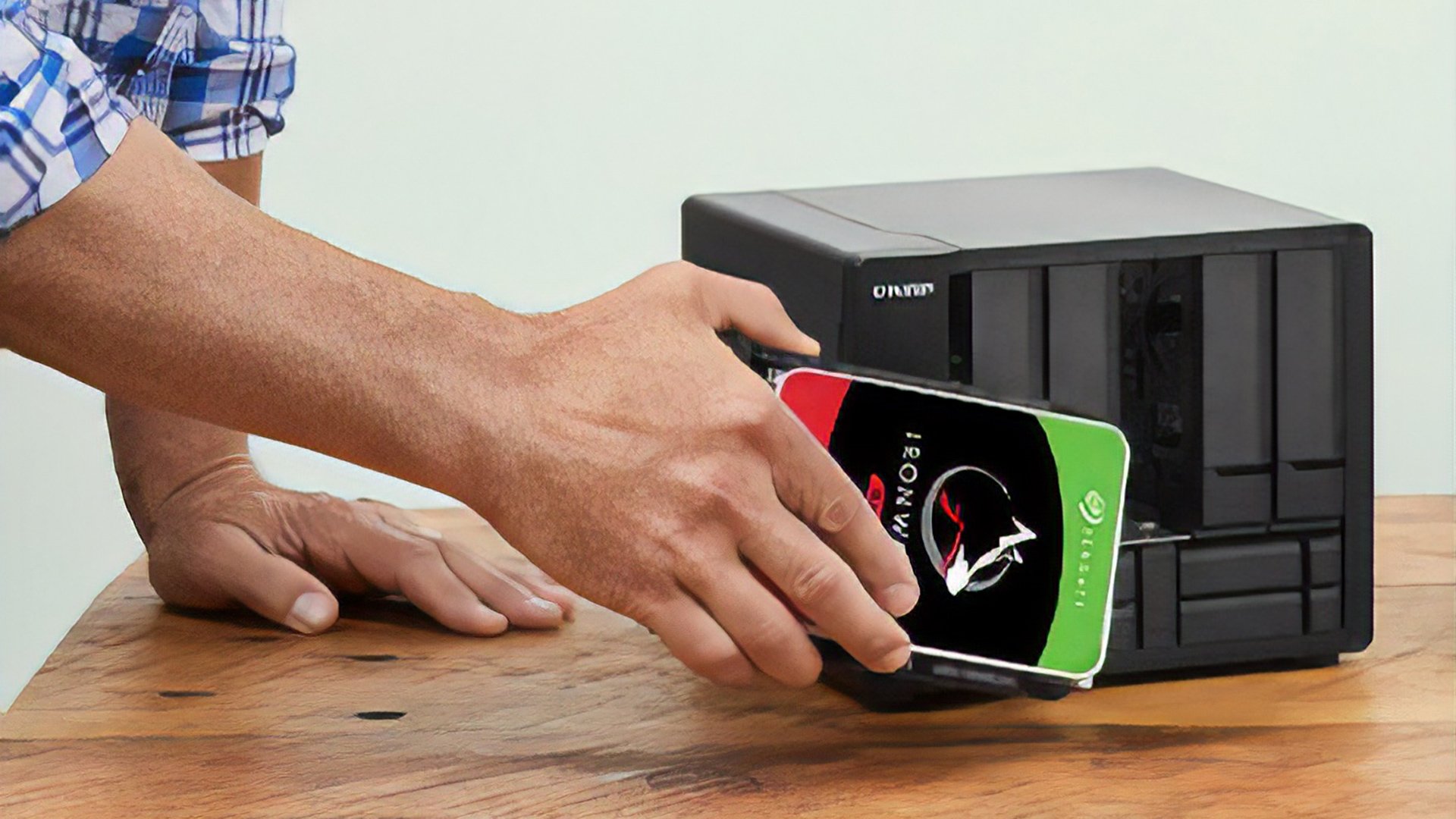
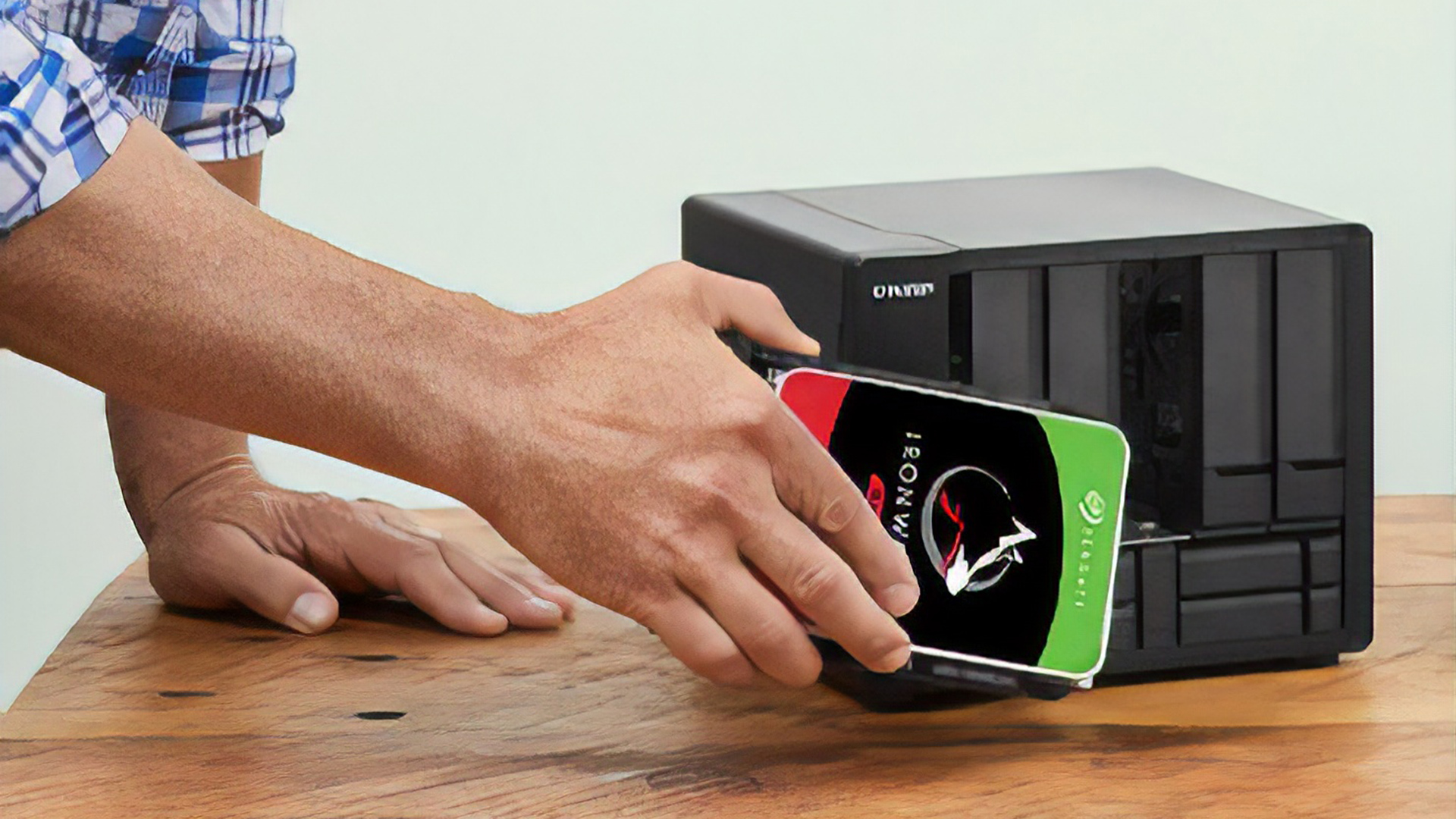
Review: It seems to be named after a 1980's action movie, but we take a look at Seagate's IronWolf NAS drive. The spinning disk isn't dead yet.
Flash storage has reached the point where people often question whether a workstation needs spinning disk storage at all. We passed that point with more everyday computers ages ago, though for the last several years, people have feverishly tried to work out if it’s yet possible to build a video editing workstation solely around flash storage. Sure, it’s possible, but it’s not cost-effective and that’s for one reason: hard disks are advancing just as flash is.
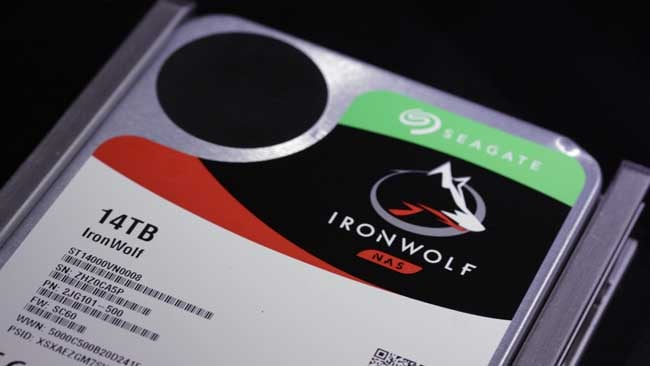
Seagate IronWolf NAS 14TB
Somewhere near the bleeding edge of hard disk development are Seagate’s IronWolf series, represented here by the 14TB version. The fine people at Scan supplied eight of these behemoths via Seagate in conjunction with our discussion of the Supermicro 5049A-T workstation, but they’re worth a second look to reinforce the fact that not every storage job is necessarily the right place to use flash.
The first thing that we’ll encounter on the drive’s datasheet is the NAS branding, referring to the idea of having all the storage in a server closet somewhere and making it available to everyone in the facility via a network. Network-attached storage, NAS, is somewhat distinct from a storage area network, SAN, where a NAS sends files while a SAN provides networked access to individual disk blocks, often over a high-performance network. SAN tends to be more complicated and expensive but faster. Both of those are distinct from local storage where the hard disks are connected directly to the workstation.
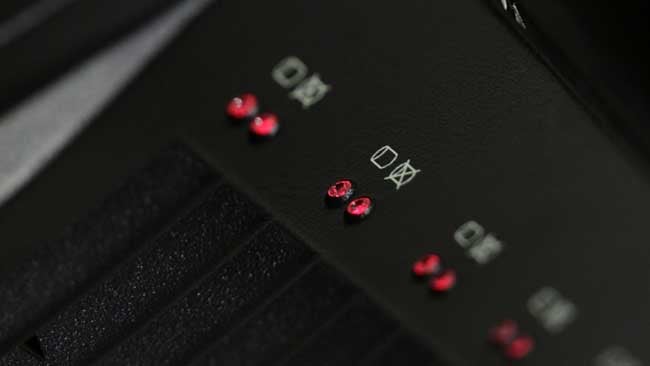
Fear not, all this red is just the power-on self-test
Most disks will handle all these things to some extent. By the time we get down to the level of the individual drive, it’s just data, give or take some extra task-specific capabilities. On the IronWolf series, Seagate offers integration of the drive’s health monitoring with certain NAS enclosures from various vendors, as well as some emergency recovery options in case the worst happens. It’s worth bearing in mind that MTBF figures might give us an idea of how long the drive will last; they don’t guarantee it will achieve those figures. Naturally, none of us is using any sort of storage, be it flash or spinning disk, for critical purposes without both backup plans and redundancy in place. Are we?
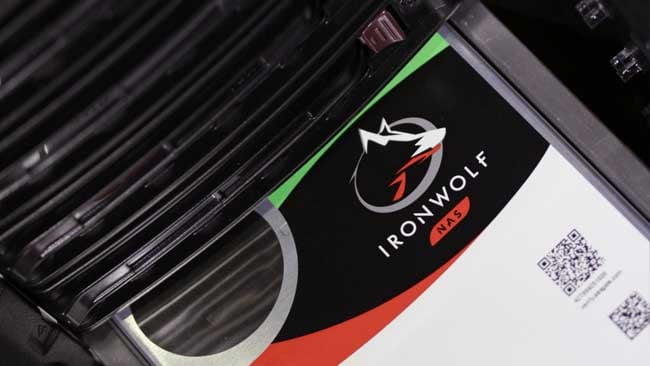
Look how much storage I've got
At £424.99 plus VAT, the 14TB IronWolf is competitive with devices in its capacity class (that is, huge). Most of the value of it is in the sheer density. This sort of thing is pursued because people building big server farms (that thing we call “the cloud” when we’re trying to sell it to consumers) sometimes have a financial incentive to pack as much into a given space and power as they can. The incidental advantage of high-density drives is sheer speed. Putting many read-write heads over a stack of many disks and packing the data onto those disks, so all the bits and bytes are passing by quickly, gives us a lot of performance.
Each drive has a generous 256MB of cache memory. Some of that is used to do things like native command queuing, part of which allows the drive to reorder requests so it has to move the heads around as little as possible. Hard-disk heads move blindingly fast to the naked eye but any sort of physical activity is comparatively very slow, indeed. If a drive has the opportunity to reorder things so that it can make fewer moves, so much the better. Cache also makes it possible to receive a lot of data from the computer and hold it while the mechanical parts become ready to write it to the disk. Because of all this, small amounts of data can appear to read and write with impossible speed, because they’re being retrieved from cache memory, not the disk.
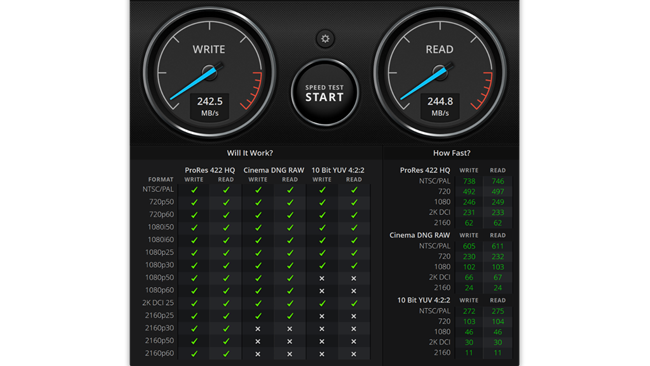
Remember when it took a fridge full of hard disks to do this
In video, we’re generally interested in large files. According to Blackmagic’s disk speed test, peak speed approaches 240MB/second. The perspective on this is that, a few years ago, we were working hard to create disk arrays that would sustainably feed uncompressed HD material to software like Resolve. Uncompressed (that is, 1920 by 1080, 10-bit RGB) HD equates to about 180MB/second, so now we have single drives that’ll happily do that. That raw performance will tend to shelve off a bit once the drive has seen some use, but that’s really a matter of the operating system’s filesystem rather than the drive itself.
Still, the purpose of the Ironwolf series isn’t really to exist as individual drives. It’s tricky to characterise hard disks in the context of a RAID setup since the RAID controller itself (and any associated software) will hugely affect the results. Without any hardware RAID controller at all, we saw results in the 850MB/second range across eight drives on the Supermicro workstation. On paper, a RAID-10 should achieve around the same performance as half the number of drives added together, so we might hope to push closer to 1TB/second with a proper hardware RAID-10 controller.
The Seagate IronWolf 14TB is huge, fast, and not expensive given the density. Two in a RAID-1, or better, four in a RAID-10, would be more storage than most workstations need. Flash is great, of course, for scratch space and anywhere that a huge amount of random access is needed – but for storing footage, for dealing with the heavy lifting, the spinning disk is still king.
Tags: Technology


Comments